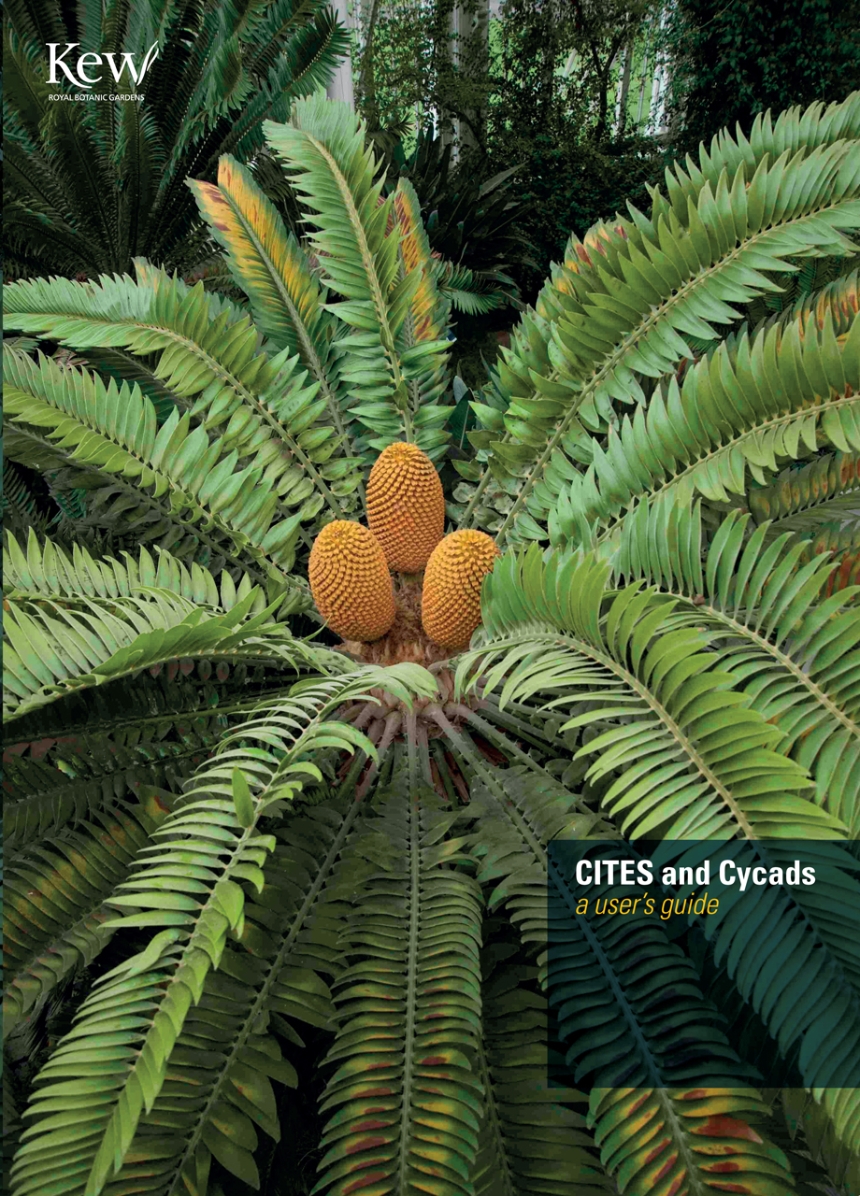Stout cycads are an ancient plant species, pre-dating dinosaurs and remaining virtually unchanged for millions of years. These “living fossils” offer an important link to prehistoric times, and their rarity and highly threatened status mean regulations are more important than ever.
CITES and Cycads offers straightforward guidance on the trade regulations set by the Convention on International Trade in Endangered Species (CITES), combining rules and exemptions with information on distribution, trade routes, and conservation status. Written for the non-expert, it features identification tips and a checklist of cycad species as well as notes on illegal trade and suggestions on handling enforcement. A CD-ROM containing a fully illustrated PowerPoint with speaker’s notes rounds out this comprehensive guide to regulating these venerable and tenacious plants.
CITES and Cycads offers straightforward guidance on the trade regulations set by the Convention on International Trade in Endangered Species (CITES), combining rules and exemptions with information on distribution, trade routes, and conservation status. Written for the non-expert, it features identification tips and a checklist of cycad species as well as notes on illegal trade and suggestions on handling enforcement. A CD-ROM containing a fully illustrated PowerPoint with speaker’s notes rounds out this comprehensive guide to regulating these venerable and tenacious plants.
114 pages | illustrated in color throughout, 1 compact disc | 8 3/8 x 11 7/8 | © 2013
Biological Sciences: Botany
Table of Contents
Introductory Slides
Slide 1: CITES and Cycads
Slide 2: What this Presentation will cover
Introduction to Cycads
Slide 4: What are Cycads?
Slide 5: Why are Cycads important?
Slide 6: Cycad Leaves
Slide 7: Cycad Stems/Trunks
Slide 8: Cycad Cones
Slide 9: Cycad Classification
Slide 10: Cycad Distribution
Slide 11: Cycadaceae
Slide 12: Cycadaceae Distribution
Slide 13: Stangeriaceae
Slide 14: Stangeriaceae Distribution
Slide 15: Zamiaceae
Slide 16: Zamiaceae Distribution
Slide 17: Cycads and Palms
Slide 18: Cycads and Palms—Stems
Slide 19: Cycads and Palms—Leaves
Slide 20: Cycads and Tree Ferns
Slide 21: Cycads and Tree Ferns—Stem
Slide 22: Cycads and Tree Ferns—Leaves
Slide 23: Are Cycads Threatened?
Slide 24: Introduction to Cycads: Summary
CITES and Cycads
Slide 26: Trade Regulations
Slide 27: Why are Cycads Traded?
Slide 28: Why are Cycads Traded?
Slide 30: Which Commodities Are Traded?
Slide 30: Which Commodities Are Traded?
Slide 31: Global Trade
Slide 32: African Trade
Slide 33: Illegal Trade: Africa
Slide 34: Illegal Trade: Africa
Slide 35: Australian Trade
Slide 36: Asian Trade
Slide 37: Illegal Trade—Asia
Slide 38: Central and South American Trade
Slide 39: Illegal Trade—Central and South America
Slide 40: CITES and Cycads: Summary
Implementing CITES for Cycads
Slide 42: Enforcement—General Checks
Slide 43: CITES Definition of ‘Artificially Propagated’
Slide 44: Wild or Artificially Propagated—Key Characteristics
Slide 45: Stricter Measures
Slide 46: What are Suckers?
Slide 47: Are Suckers Artificially Propagated?
Slide 48: Control of Seeds
Slide 49: Exemptions
Slide 50: Implementing: Summary
Additional Slides
Slide 52: CITES Checklists
Slide 53: Information Sources
Slide 54: Encephalartos latifrons
Slide 55: Cycas revoluta: the Supermarket Plant
Slide 56: Encephalartos altensteinii
Slide 57: Dioon edule
Slide 58: The CITES Non-Detriment Finding
Glossary
Annex: The CITES Checklist
Slide 1: CITES and Cycads
Slide 2: What this Presentation will cover
Introduction to Cycads
Slide 4: What are Cycads?
Slide 5: Why are Cycads important?
Slide 6: Cycad Leaves
Slide 7: Cycad Stems/Trunks
Slide 8: Cycad Cones
Slide 9: Cycad Classification
Slide 10: Cycad Distribution
Slide 11: Cycadaceae
Slide 12: Cycadaceae Distribution
Slide 13: Stangeriaceae
Slide 14: Stangeriaceae Distribution
Slide 15: Zamiaceae
Slide 16: Zamiaceae Distribution
Slide 17: Cycads and Palms
Slide 18: Cycads and Palms—Stems
Slide 19: Cycads and Palms—Leaves
Slide 20: Cycads and Tree Ferns
Slide 21: Cycads and Tree Ferns—Stem
Slide 22: Cycads and Tree Ferns—Leaves
Slide 23: Are Cycads Threatened?
Slide 24: Introduction to Cycads: Summary
CITES and Cycads
Slide 26: Trade Regulations
Slide 27: Why are Cycads Traded?
Slide 28: Why are Cycads Traded?
Slide 30: Which Commodities Are Traded?
Slide 30: Which Commodities Are Traded?
Slide 31: Global Trade
Slide 32: African Trade
Slide 33: Illegal Trade: Africa
Slide 34: Illegal Trade: Africa
Slide 35: Australian Trade
Slide 36: Asian Trade
Slide 37: Illegal Trade—Asia
Slide 38: Central and South American Trade
Slide 39: Illegal Trade—Central and South America
Slide 40: CITES and Cycads: Summary
Implementing CITES for Cycads
Slide 42: Enforcement—General Checks
Slide 43: CITES Definition of ‘Artificially Propagated’
Slide 44: Wild or Artificially Propagated—Key Characteristics
Slide 45: Stricter Measures
Slide 46: What are Suckers?
Slide 47: Are Suckers Artificially Propagated?
Slide 48: Control of Seeds
Slide 49: Exemptions
Slide 50: Implementing: Summary
Additional Slides
Slide 52: CITES Checklists
Slide 53: Information Sources
Slide 54: Encephalartos latifrons
Slide 55: Cycas revoluta: the Supermarket Plant
Slide 56: Encephalartos altensteinii
Slide 57: Dioon edule
Slide 58: The CITES Non-Detriment Finding
Glossary
Annex: The CITES Checklist

